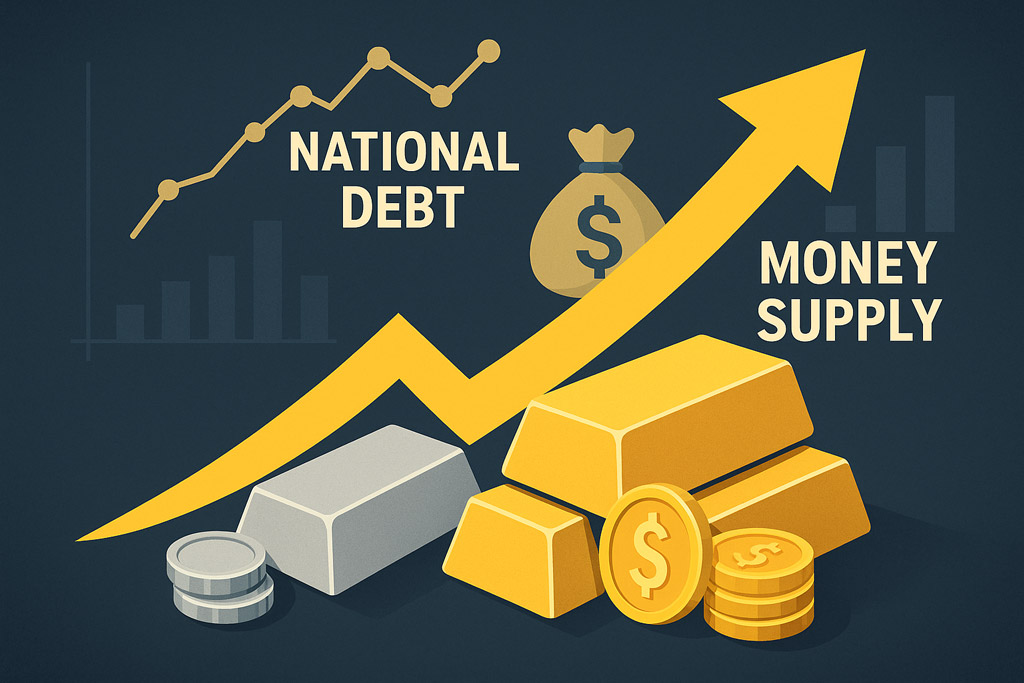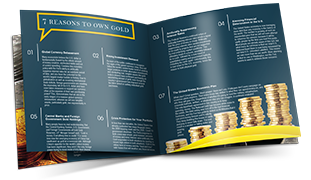 Gold has soared by around 129% and silver by around 187% in the past three years alone, yet analysts at Sound Money Report believe both metals have plenty of room to run higher. When measured against the long arc of fiat expansion, gold’s true value is far beyond the spot price.
Gold has soared by around 129% and silver by around 187% in the past three years alone, yet analysts at Sound Money Report believe both metals have plenty of room to run higher. When measured against the long arc of fiat expansion, gold’s true value is far beyond the spot price.
Monetary benchmarks, such as the surging national debt, the ballooning M2 money supply, and the broad US monetary base, indicate the yellow metal is worth vastly more than its current trading price. Even as gold climbs to record highs and silver rams through long-held price ceilings, the bull market may be far from over.
Gold & Silver Up 129%+ in Past Three Years
In September of 2022, gold was hovering around $1,660/oz. Three years later, the yellow metal’s extended rally has elevated prices to above $3,800/oz, more than doubling over a relatively short period. In total, that’s a 129% gain. This relentless momentum is picking up steam, with 40+ new highs hit in 2024 alone.
Silver has kept pace with its larger cousin, posting a whopping 187% leap since 2022. Three years ago, silver prices sat around $16/oz before rising beyond $46/oz, doubling almost annually. The shiny metal remains far from records, but recently hit a 14-year high, signaling growing strength.
Monetary Expansion Reflects Gold’s True Value
After centuries of tying currencies to precious metals, the global economy fully transitioned to a fiat system in the 1970s. The Nixon Shock ended the dollar’s convertibility into gold, though the foundation had already been weakened decades earlier under the Bretton Woods framework established in 1944.
While gold has not officially backed currencies for decades, governments never stopped relying on it in practice. Central banks around the world continue to hold large physical gold reserves to reinforce confidence in their fiat systems, as a kind of behind-the-scenes gold standard.
Since the dollar was decoupled from gold, both the gold price and the money supply have surged, but not in tandem. Gold’s value has climbed steadily due to its finite supply, extraction costs, and decentralized global demand. Fiat currency, by contrast, has expanded rapidly under the logic of Modern Monetary Theory, which allows governments to create and spend money without hard constraints.
When gold is compared against the growth of key fiat-era metrics — such as the monetary base, M2 supply, or federal debt — it becomes clear that today’s spot price significantly understates its historical and monetary value.
Here’s where gold would stand today if it had followed the growth of the following metrics:
- US Monetary Base → $30,000/oz
- M2 Money Supply → $12,000/oz
- Federal Debt Growth (1980–2025) → $36,000/oz
- Federal Debt Growth (since 2011) → $4,788/oz
👉 Related Read: Modern Monetary Theory – Socialist Economics for Dummies
Structural Demand Bolsters Bullish Position
The belief that gold and silver are still undervalued is reflected in rising demand across the board. Structural buying has stayed strong for both metals even as the rally enters its third year, suggesting continued bullish expectations.
Official sector demand remains historically high. Central banks have purchased more than 1,000 tons of gold per year for three years in a row, something not seen before in the modern financial era. Gold also now makes up nearly one-third of total global foreign reserves for the first time in roughly 30 years.
Silver is experiencing a similar increase in demand, especially from industrial users and retail investors. Tech investor David Bateman recently bought 12.69 million ounces of silver, equal to around 1.5% of global annual supply. The move mirrors Warren Buffett’s accumulation in the late 1990s, when he acquired roughly 25% of annual worldwide silver production.
Gold to $4,800; Silver to $62?
Analysts at the Sound Money Report argue that gold’s current price doesn’t reflect its true value when compared to the scale of monetary expansion in the US. They point to metrics like the growth of the money supply and federal debt to illustrate just how far gold has lagged. While some theoretical valuations place gold much higher in a vacuum, their official forecasts remain more grounded, but still bold.
In their base-case scenario, gold reaches $4,800/oz by 2030. In a hyperinflationary environment, that projection rises to $8,900/oz within the same time frame. These predictions fall in line with a broadening consensus that gold could hit $4,000/oz and $5,000/oz within the short term.
The outlook for silver is equally bullish, with predictions placing the shiny metal at $52/oz to $68/oz, depending on the time period. Even sub-$50/oz silver is historically affordable compared to gold, as the extended gold-to-silver ratio illustrates.


